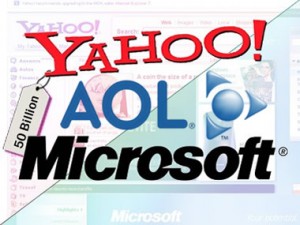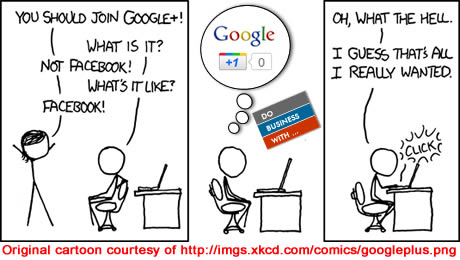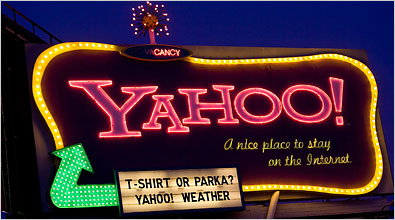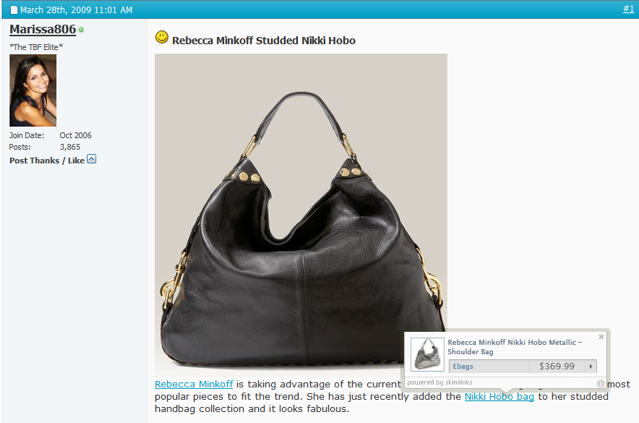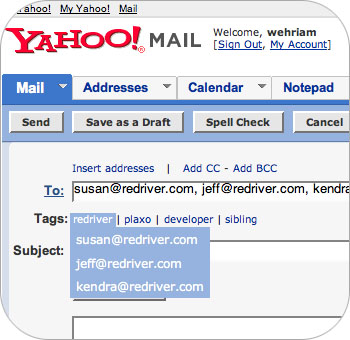When I heard a while back there was a new network called CPAWAY, the first thing I thought to myself was: “Another network called CPAsomething…”Over the last year I’ve gotten to know Thomas Deitzel and his company, and more importantly the way that he does business and how his company works. In a short period of time, CPAWAY has become one of the top CPA Networks and one that is spoken of in almost every group as a success story. If you’ve attended any convention, you’ve seen CPAWAY as the top sponsor at all of them. I was able to sit down with Thomas Dietzel the owner of CPAWAY this week and find out how he’s build his company, where he sees the industry going and what opportunities there are out there for affiliates.
Q. Tell us about yourself, how you got started in the industry and what makes you tick.
A. Pace, I’d like to start with thanking you for taking the time to interview me. This is one of the most difficult and uncomfortable questions for me to answer. As clumsy as it may sound, I’m not very good at tooting my own horn, mostly because talk is cheap and our industry like most others is results driven on minute to minute basis.
I’m blessed! As a 27 year old entrepreneur I have an awesome wife that provides a much needed support system and two wonderful daughters. I will admit that one of the biggest obstacles to overcome is the ability to strike that balance between business builder, husband and father. Fortunately, I’m made well aware when this balance is out of whack.
Unknowingly, I entered this industry many times over the last 10 years and can recall receiving checks in 1999 from CJ marketing band fan sites for various music artists and groups. In 2004 and 2005, I was driving traffic to various web hosting affiliate programs after selling our web hosting entity. We had over 600 dedicated servers under our label prior to us selling it and moving on. Webhosting had quickly become my passion as we were quickly able to build a company from a $19.95 reseller account to a multi-million dollar entity in 9 short months. The margins in that industry at the time were very slim and only those with VC backing them were able to take it to the next level.
In the middle of Q3 2006, I had come up with the idea to use CPA offers to provide free domain names. At the time, not being a developer, we quickly hired one on script lance to help build out a platform that would allow us to track this. We joined two affiliate networks and were off to the races. Within 4 months we branched out and started providing multiple items for free, from which 5 additional sites took hold and started producing hundreds of thousands of dollars on a monthly basis. But, as with anything else, the incentive space quickly grew and many competitors entered the field to take their share of a very lucrative market sector.
My focus changed heavily into creating an affiliate network in early 2009. We came up with the name CPAWay and off to the races once again with development and new ideas…. In October 2009 we officially opened up CPAWay to our affiliates and it has been a fun and rewarding climb ever since.
Q. What affiliate platforms are you using and why? If there are some features you could add to it, what would they be?
A. When we started our network and began the planning stages for it, like most others we demoed all of the off-the-shelve solutions available at the time. Not surprisingly, most of the systems offered were clunky and not very user friendly. Each solution had its own unique feature sets which were to the contrary of what we were trying to create. Our need was a solution that allowed us to run an entire business from one platform. Not having to be dependent on a separate CRM tool, separate accounting platform, fraud prevention system amongst other items was paramount. It became very clear that we would have to build our own. To get started, we purchased an open source off-the-shelf-product to quickly establish a base for everything. This off the shelfer was turned into a very power tool. Over the next 2 years an entire re-write was done and not a single line of that original code exists in our platform today. With my re-write, I also added all the features we would need to run a successful PROACTIVE business. Today, this platform system has everything it requires to perform and deliver results (until a new idea is brought forward to make it better). To this end we are adding new features daily to make our business model more efficient. In an attempt at staying ahead of the curve, our corporate road map is set for the next 6 months from a structure and revenue standpoint.
Q. You’ve done a great job of branding – what are you trying to tell people through your ads and website?
A. We have spent a fortune in branding over the last 12 months. This effort has definitely paid off and rewarded my company with a tremendous amount of business. Our continued goal through various channels is to message confidence to both our Publishers and Advertisers alike. The picture we’ve attempted to paint and feeling we want to convey is this. We are not a fly by night network, but are here for the long haul. This fortune is in the hundreds of thousands of dollars and holding up our brand is priceless. Our Publisher base can rest easy in knowing that when it comes to their money, they will receive every penny owed them. For our Advertisers, we will build sound relationship and gain respect and trust over time so that they have confidence in allowing us to manage their most valued campaigns.
Q. If you had 10 seconds to tell a super-affiliate why they should work with you, what would you tell them?
A. CPAWay is cash flow positive with a long term business model. I own the office we work in and I’m continually investing in my company’s future. There’s a lot of pride that comes with paying on-time every time and believe it or not, if you call our office we answer the phone. (Simple enough right? But if you called 10 networks, you would probably only get 20 – 30 percent of them on the phone if that) Also, we will not hide behind a PO BOX or secured office space where you need a blood and urine sample to get buzzed in. Why Hide? Lastly, as far as we are concerned, every affiliate has the potential to become a super-affiliate and for this reason, we would never discriminate against any new comers.
Q. Why should advertisers work with CPAWAY? What makes your traffic and affiliates any different than 100 other CPA Networks?
A: We have a very strong proactive approach to conducting our business. This is a very common question received all the time. The best answer I can give is our staff. Every one of my employees completely understands what is expected of them. As a unit, we are driven to conduct ourselves with an “eye open” approach. Happen to your day before the day happens to you. Things don’t magically correct themselves, success for our customer base require proper planning followed by the execution of that plan. That said mistakes happen. A bad affiliate may get into our platform. Almost always we identify these unwanted affiliates with our pre-emptive screening of traffic before our merchants realize they existed. This allows us to mitigate potential programs before they become harmful to our merchants. Our affiliate screening process is second to none. We don’t rely solely on online tools to screen affiliates. A few of our techniques involve going back to basics which require us to think outside the box. (Merchants can inquire for full details; we can’t publish our methods online for obvious reasons) J
We do not setup merchants to fail. If they opt-in to traffic types we feel may not be a good choice for a specific offer, we tell them in advance that they should simply refuse to allow that bad experience to happen.
Q. If you could go back two years in time and tell yourself something about this industry, what would you reveal?
A. This is a very difficult question. I would suggest a lot more forward thinking to keep ahead of trends and not jumping into those trends too quickly. I’ve seen many businesses fail from simply bouncing from trend to trend.
Q. What would you say your biggest success has been with CPAWAY?
A. My biggest success would be controlling growth while preserving cash and capital. We have not taken on any venture capital, or partners. I’ve learned from past experience that partners typically never work and I stick to this premise. We are seeing growth month over month and will continue to do so as we release our technology and monetization tools gradually and over time.
Q. What changes would you like to see in the industry?
A. As with any industry, there are lots of changes that I’d love to see. However as with every other industry, change does not occur without a leader. Someone must always be first and the others will follow suit. We are hoping by taking proactive fraud prevention techniques others will copy and move on. The sad part is, since this costs money and doesn’t bring in real time capital, most simply ignore it. (It does bring in capital over time because you are able to build true relationship with your merchants.) Over the last 2 years turnkey software has put a damper on our industry. It allows anyone with a credit card to become a network. While this is stimulating in many ways, it gives “networks” a bad name.
Q. You’re a huge sponsor of many of the conferences. What advice can you give people when attending these conferences, and what they can take from each one?
A. Many people ask why they should attend a conference. The simple answer is relationship-building. While technology allows us to be virtually anywhere, nothing can replace what human interaction provides. I have built hundreds of relationships over the years simply by attending conferences. Most of these relationships would not be possible without conferences, as some partners require face-time to close a deal. Face-time is something you can’t put a value on. It simply supersedes any email or telephone conversation you could ever have.
My advice for those attending a show, would be is to meet with as many people as physically possible. Make the most of your time by scheduling as many meetings in advance prior to attending. While most breakout sessions are good, spend your time and money wisely. I’ve learned this value add by simply chatting with various people. It is amazing how much information you can obtain and learn inside these types of conversations. Most are very eager to share their ideas with you, and from that, a new idea may be triggered for you. If you decide to attend a session, take action with the ideas and information you learn from them. Always read between the lines. (Is the session simply trying to sell you something? Is there a message or method you need to try and use to your company’s advantage?)
Q. What is a great new source of traffic that you’d love to tell people about to try when running CPAWAY offers?
A. While the traffic source may not be new, it is the one most frequently forgotten about. Second Tier search engines and providers allow for much lower click costs while delivering similar if not better results. Our account managers can provide examples if asked.
Q. WarriorForum seems to love CPAWAY. What advise can you give affiliates in using this forum?
A. My advice is to never buy anything with the exception of maybe the war room membership. There are many “get rich quick” offerings there which have absolutely no value to anyone other than the person selling them. Most affiliates fail because they try everything and never stick to one method. Pick a method and stick to it. Once you’ve perfected it, then bridge into additional methods. Don’t believe everything you read. Take into account 100% inflation on figures from those who post them.
Again, pick one method and try to master it, and then grow from there.
Q. Any tools that you’d recommend for affiliates in general?
A. There are many tools out there. The best tools are free. I won’t mention any by name, as I don’t like to promote products that I have not personally used. Our affiliates can definitely hit up our account managers for specific tool ideas. J
Q. What are your goals for CPAWAY in the next 12 months?
A. We have many goals over the next 12 months. While most we can’t speak of specifically, (until they are released for obvious reasons), our most important goal is to increase revenue by 400% in 2012. We will do this by utilizing the tools we are releasing over the course of the next 6 months. These tools will become the tracking to monetization vehicles for our publishers to utilize and take full advantage of. (This is one significant example of the benefits in offering your own platform)
CPAWAY is throwing a huge party for ADTECH – RSVP Here: www.xposure2011.com


